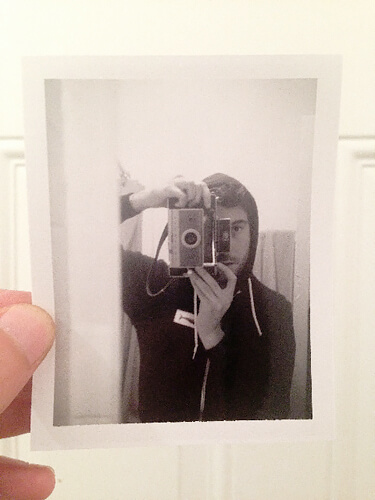Stefano Galli is an Italian photographer born in 1981.
After graduating at the University of Turin, with a BA in cinema, he moved to Copenhagen, Denmark, where he worked with director Lars Von Trier.
During these years he attended Fatamorgana, The Danish School of Art & Documentary Photography.
Fascinated with traveling and the discovery of new environments, Galli is currently working on a new series that belong to a trilogy started with 'Cars' and followed by '80 Skies'. He recently terminated a non-narrative documentary-film, based on the stories of random people met along a journey through the USA.
Galli exclusively works on a traditional analog way, both in his motion and still project.
Currently based in Los Angeles.
About '80 skies'Gazes at the sky.
The beauty and power of pure light entering the camera.
A project that recalls Claude Monet’s study of the influence of light on objects. Stefano Galli brings his own light studies to the extreme, focusing on the sky and its myriad variations.
In “80 SKIES”, the protagonists of Galli’s frames are airplanes or - better said - the small shapes that fly over our heads daily. Because of their height in the sky and the sunlight by which they are surrounded, the shapes Galli captures become
something entirely different than just giant devices that move hundreds of human beings.
In many cases, the planes are insignificant elements when compared to the magnificence of the heavens. In fact, the eye of the viewer becomes lost in the contemplation of the colors, in the totality of the photographs; looking at these images, the impression of hearing the deafening noise or the usual imagery of the airplane is not perceived.
Fascinated by movement and travel, Stefano Galli dedicates this project to the aircraft for the purpose of studying the sky. The result is a creative pictorial but also a tiring study that begins in the early hours of dawn and ends with the fall of the sun.
Pushing 35mm negatives to the extreme through a 90mm lens, he lets the film be flooded by the infinite heavenly hue, the changing colors of the horizon sometimes grayish, or yellow and pink, the broad spectrum of colors that characterize the sky.
The intensity of the light seems to struggle with the film speed, so the photographs are characterized by a thick grain that gives the picture a three-dimensional effect, as if it had been given a brushstroke.
A photographic project that shows the endless variations of the light system in which we live.
About 'Cars':
Stefano Galli’s work documents his journey of crossing deserts, through forgotten villages, on remote and empty roads. In ‘Cars’ , geography is just as important as photography even if in his shots - distinctive sharp cuts - he leads away from the dusty streets and daily life.
Galli conducts the imagination to an elsewhere where lines play with material and shape,
where the tail lights and fenders are transformed into surreal and alien beings. Yet ‘Cars’ goes far beyond a mere figurative research, the work is conducted with rigor and awareness, typical of a geographer or an archivist. In fact, Stefano meticulously notates the physical location of the intersection shown in each photograph.
Therefore, the project goes beyond the cult of the American car. Through this adventure, Galli tracks and defines - snap after snap - a cognitive path of the new continent.
So there is an aspect that links these works to a deep investigation of American society and to aspects of decay and yet, mixed with a splendor that still dazzles. The essence of his idea lies not only in the aesthetics of the work, but also in his decision to show the layers of dust on the cars, the broken headlights and swollen wheels.
In this series, a fascination with America remains.
A fascination with all its vastness and complexity, which attracts and disturbs at the same time.
Discover Stefano Galli's Interview